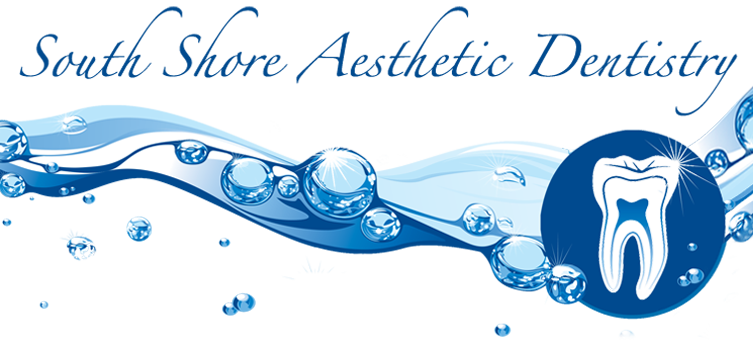Dental Implants
What is a Dental Implant?
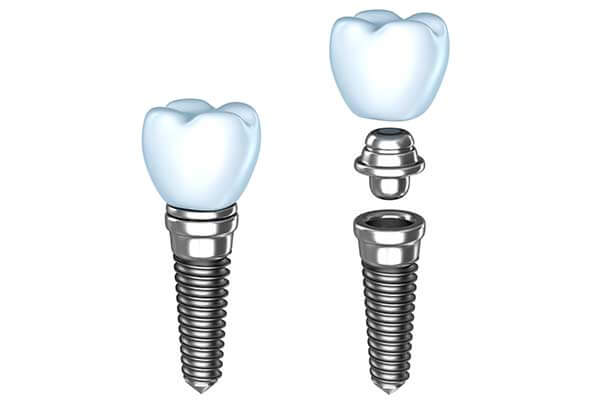
Dental implants are created from two separate components. The first component is a biocompatible and highly durable titanium post that is inserted into the jawbone at specific, pre-determined locations. Over several months, the post begins to securely fuse with the bone around it, also known as osseointegration. The second part of the implant is the visible part of the tooth.
Depending on the location and other factors, this restoration will be 100% porcelain or a combination of porcelain fused to metal. The porcelain is color-matched to existing teeth or created in your chosen shade of whiteness. Each implant is custom designed and built to reflect the shape and size of a regular tooth so that the finished implant both looks and feels completely natural.
Am I a candidate for dental implants?
While dental implants are suitable for a wide range of patients, they are not the best solution for everybody. To assess your candidacy for dental implants, please schedule a consultation appointment with one of our doctors.
During this appointment, you will be asked about your desires and expectations for dental implant surgery. Your doctor will also perform a thorough examination of your teeth and jaw and will review your x-rays to determine if implants are the best solution for you.
Implant Supported Bridges
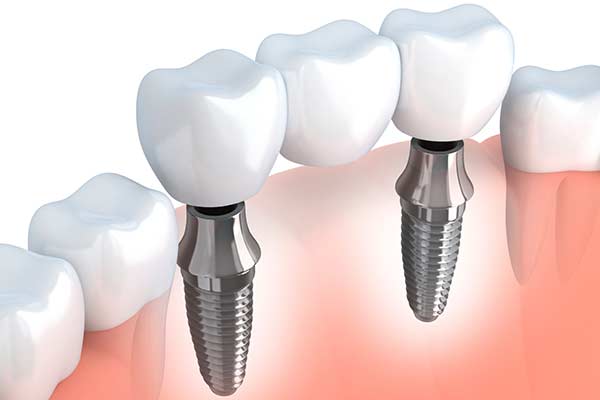
An implant supported bridge is a restorative solution for spaces where three or more adjacent teeth are missing. This restoration typically requires two implants to support the porcelain bridge. The bridge provides a functional and aesthetic replacement for a patient’s natural teeth.
What are the advantages of an implant supported bridge?
Because of the natural look and feel of the porcelain and the functional stability provided by the implants, implant supported bridges are an effective solution to replace multiple missing teeth.
A traditional bridge uses teeth on either side of the gap where teeth are missing for support. An implant supported bridge uses two or more dental implants rather than the adjacent teeth. When a bridge uses natural teeth for attachment, the natural teeth must be prepped for crowns and are then subject to increased stress which may be damaging - particularly if the existing tooth, roots, or surrounding bone structure are already compromised. A dental implant supported bridge replaced your missing teeth and avoids putting any additional stress on your natural teeth.
Implant Supported Dentures
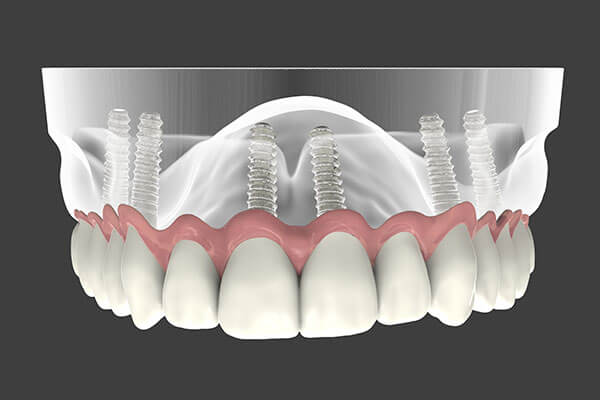
For patients who are missing many or all of their teeth, implant supported dentures may be an alternative to traditional dentures. This solution requires the placement of two or more implants. In order to replace a full arch denture, a minimum of four implants is generally recommended. Eligibility for this solution is dependent upon a number of factors, with jaw bone density being one of the most significant determining factors.
Traditional dentures rely on an acrylic base that sits directly on the gums, held in place by a paste or adhesive. Using implants as supports for dentures allows for a smaller and more comfortable base and less shifting of the prosthesis during use.
Implants can support both full and partial dentures as well as both fixed and removable dentures. If a removable denture is selected, the denture will “snap” onto the implant rather than requiring the use of denture paste or adhesives. Removable dentures can be taken out for cleaning at night.
Why should I consider implant-supported dentures over traditional dentures?
This technique offers many advantages over traditional dentures.
Easy to care for, this solution can simulate the look and feel of natural teeth and stay fixed in place with the implants acting as anchors. Patients will not experience the typical rocking and movement or gum irritation associated with dentures.
Dental implant placement can also help alleviate the sunken look that can occur with bone loss in the jaw by stimulating bone growth in the area around the implant. This process can also help prevent future bone loss.
Full Mouth Rehabilitation
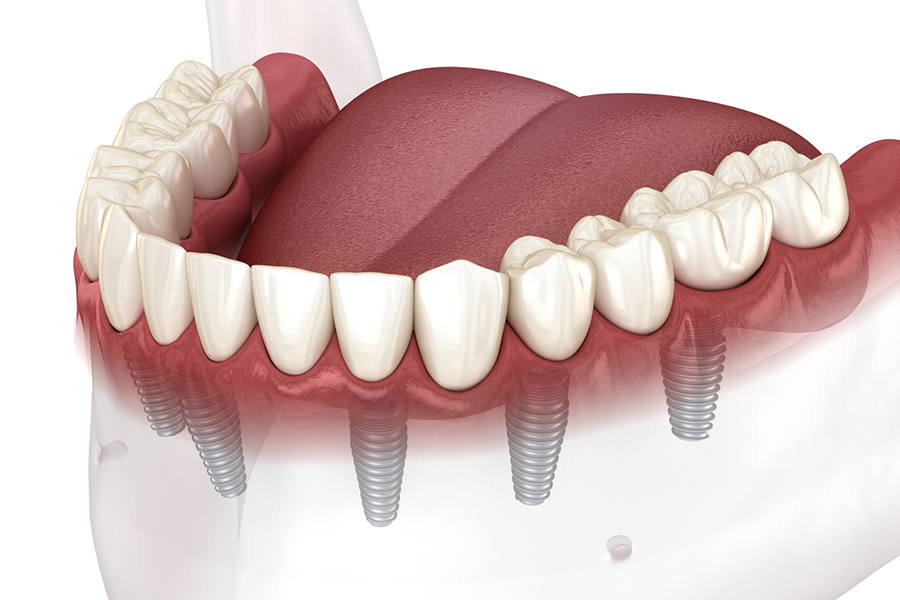
This procedure is a unique implant solution that allows patients with a completely edentulous (toothless) upper or lower arch to replace all of the teeth in that arch using only four to six implants as anchors.
